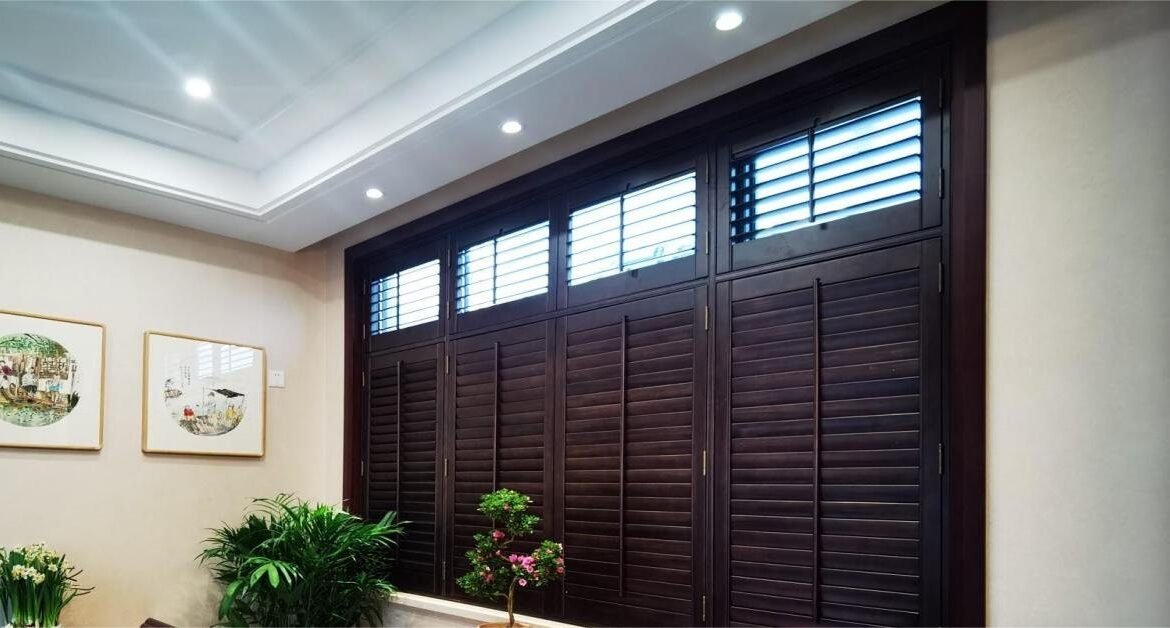When it comes to interior design, the details make all the difference. One such detail that can significantly impact a room’s aesthetics and functionality is the choice of wood for interior shutters. These shutters are not just window coverings but an integral part of a home’s character and ambiance.
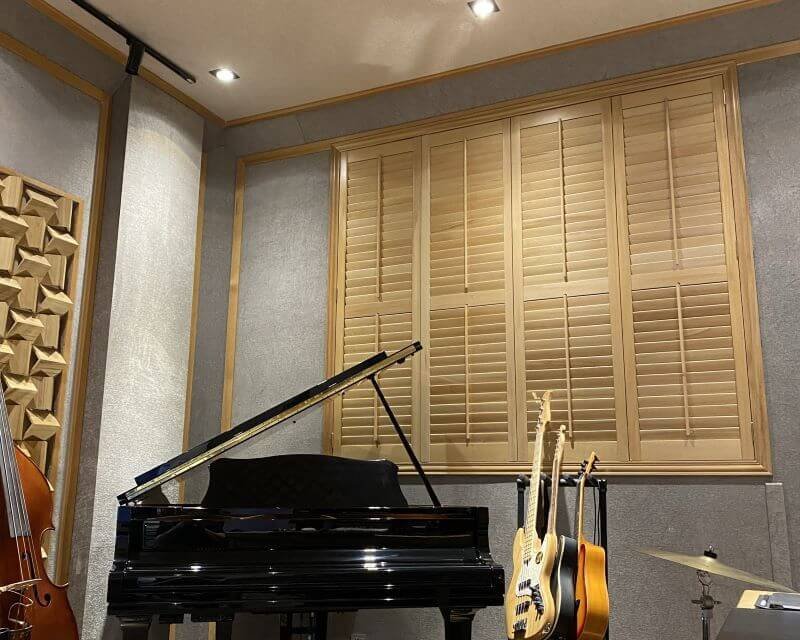
It is crucial to select the suitable wood species for your shutters. The type of wood determines the shutters’ durability, grain pattern, color potential, and overall longevity. It also affects their insulation properties and how well they withstand daily exposure to sunlight and changing temperatures.
Aesthetically, wood shutters add warmth, elegance, and a timeless appeal to any space. They can be customized to fit any decor style, from rustic to modern, and painted or stained to match or complement your existing color scheme. Functionally, wood shutters offer excellent light control and privacy and can improve energy efficiency by providing an additional insulation layer.
The suitable wood can transform ordinary windows into stunning focal points of your home, enhancing their beauty and comfort. As we explore the five popular wood species for interior shutters – white ash, basswood, poplar, pine, and Paulownia – you’ll discover how each can uniquely contribute to the design and functionality of your living space.
White Ash Wood Shutters
White Ash Wood is renowned for its deep grain, which provides a distinctive and attractive pattern, making it a visually appealing choice for interior shutters. It is also highly durable and possesses considerable strength, ensuring that shutters made from this wood are long-lasting and can withstand the rigors of everyday use.
Aesthetic Appeal
The charismatic appearance of White Ash Wood shutters can significantly enhance a room’s aesthetic. The wood’s deep grain is beautifully accentuated with a rich stain, offering a range of color options that can complement various interior designs. Even when painted, the unique grain pattern of White Ash Wood adds depth and character to the shutters, setting them apart from those made with lighter-colored wood.

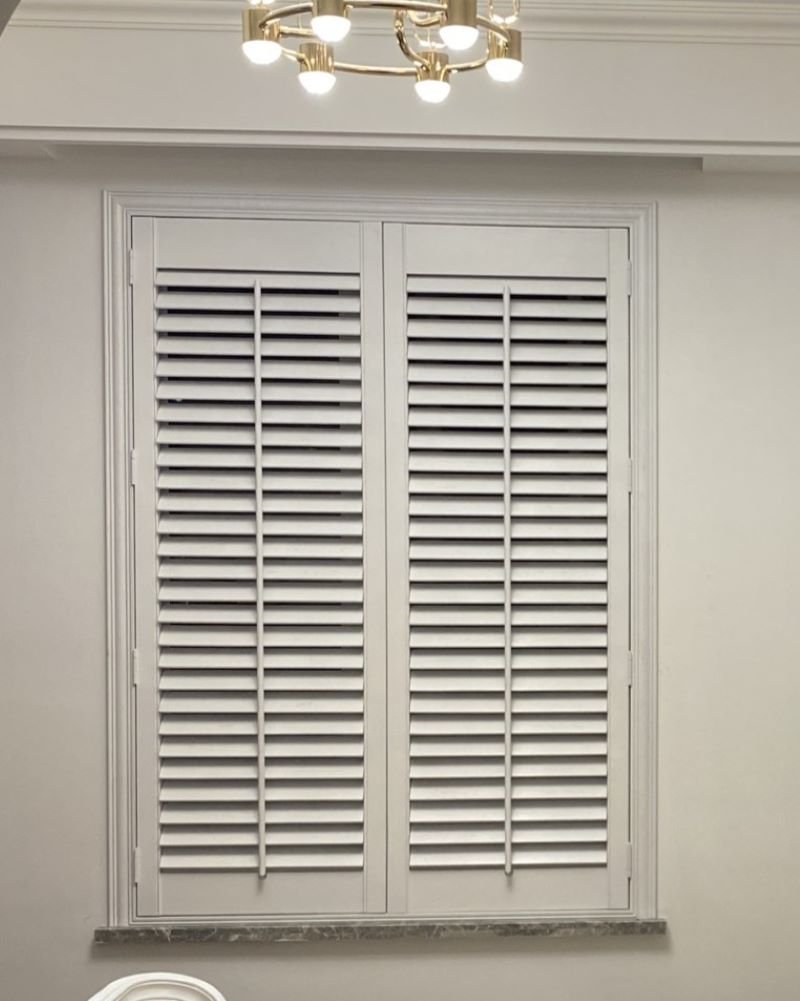
Best Uses
White Ash Wood shutters are versatile and can be integrated into numerous design styles. They are particularly well-suited for settings where the natural beauty of wood is desired to be showcased. Due to their strength and durability, they are an excellent choice for high-traffic areas and can be used in traditional and contemporary homes. Additionally, their unique grain pattern makes them a favorite among those who appreciate wood’s natural charm and elegance in interior design.
Basswood Shutters
Basswood is a top choice for interior wood shutters due to its closed-grain structure, which ensures a smooth finish and uniform appearance. It produces less sap, which minimizes issues with staining or painting over time. Additionally, basswood is resistant to warping, maintaining its shape and functionality even under varying environmental conditions.
Advantages
One of basswood’s most significant advantages is its ease of staining or painting. This flexibility allows a wide range of color options to match any interior design. Basswood is also well-suited for large panels due to its structural integrity, ensuring that the shutters do not bend or distort over time.
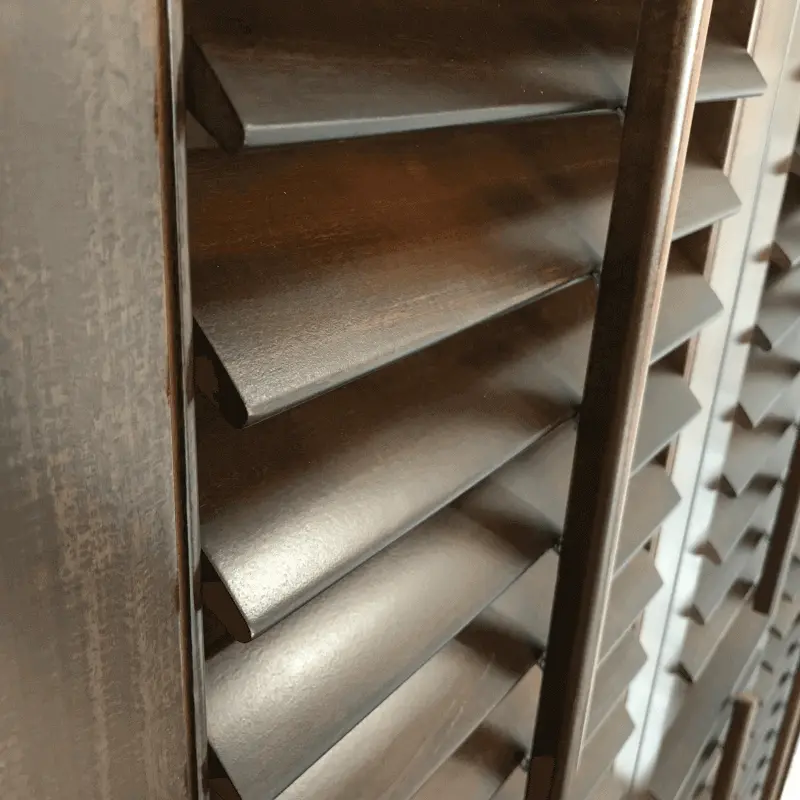
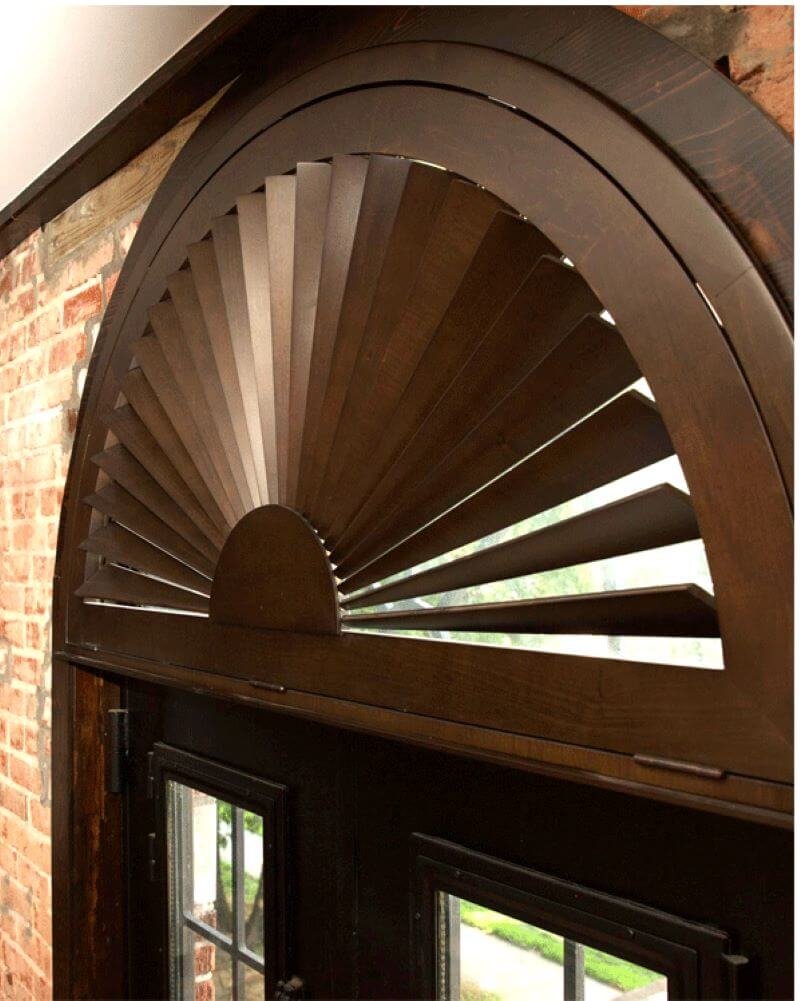
Best Uses
Basswood shutters are incredibly versatile and can be adapted to fit a variety of interior designs, from classic to contemporary. They are particularly effective in rooms where consistent light control and privacy are desired. Due to their durability and resistance to moisture, they are also an excellent choice for areas like bathrooms and kitchens, where other wood types might perform better.
Poplar Shutters
Poplar wood is a popular choice for interior shutters due to its lightweight nature, making it easy to handle and install. It is also cost-effective, offering a budget-friendly option without compromising on quality. The wood has a smooth surface, which ensures a clean and refined finish.
Painting and Staining
Poplar wood is highly adaptable to painting and staining. It holds paint and enamel well, resulting in durable and long-lasting finishes. While it can be stained, it’s important to note that poplar may absorb stain unevenly, leading to a blotchy appearance. Therefore, lighter stain colors are recommended to minimize this effect, and a wood conditioner should be applied before staining to achieve the best results.
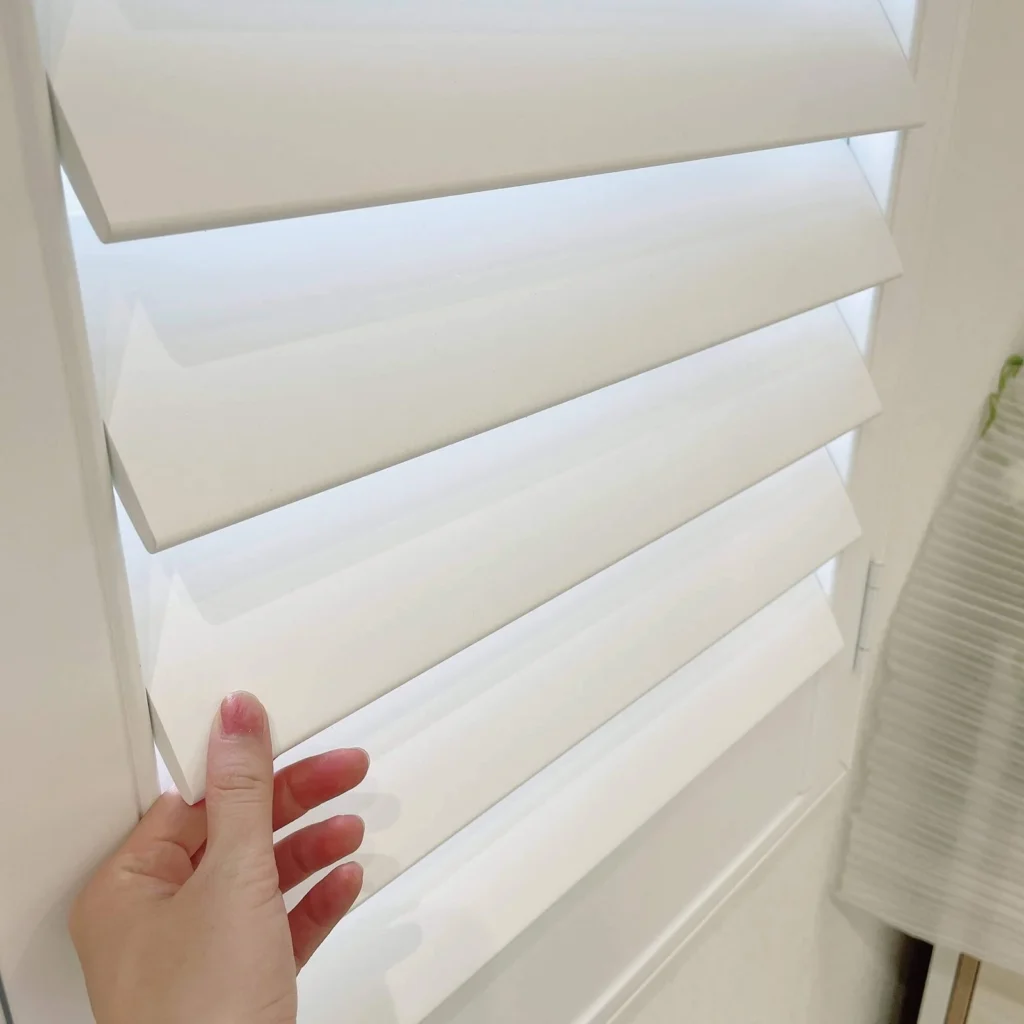
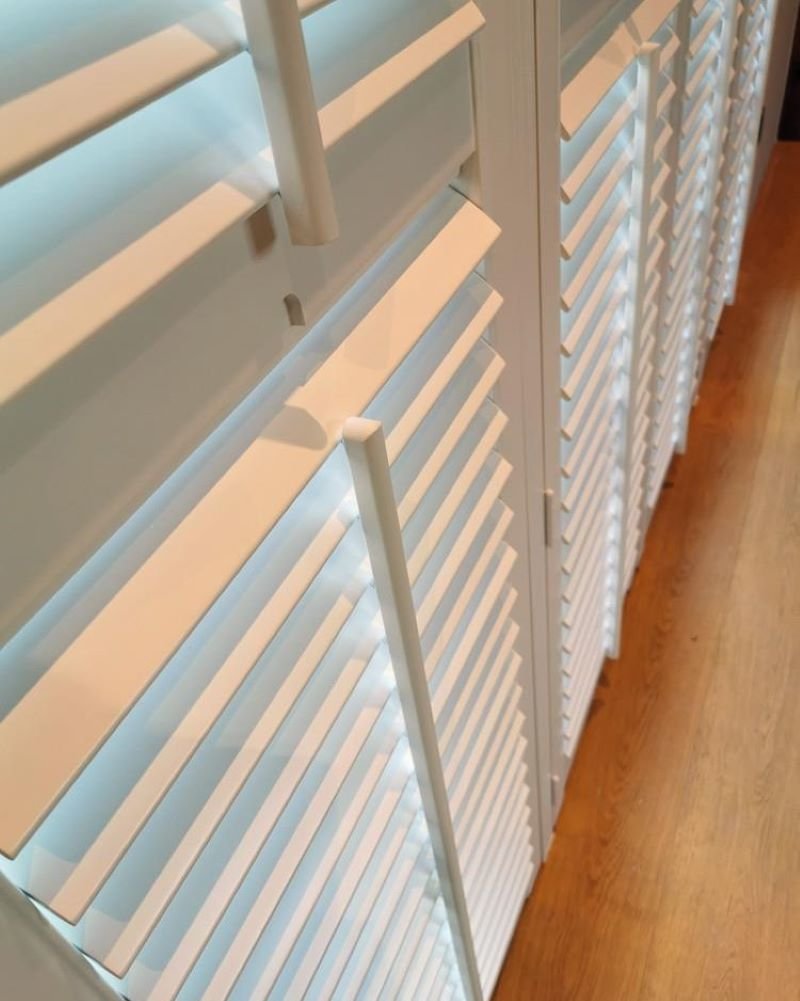
Best Uses
Poplar shutters are best utilized in settings where a painted finish is desired, as they provide an excellent surface for paint. Due to their stability and ease of handling, they are suitable for oversized windows and doors. Poplar’s versatility makes it an excellent choice for traditional and modern interior designs, fitting seamlessly into various decor styles.
Pine Shutters
Pine is a popular choice for interior wood shutters due to its natural resistance to rot and its charming rustic appeal. This softwood is known for its longevity and ability to withstand decay, making it an excellent option for areas with high humidity or moisture.
Characteristics:
- Natural Resistance to Rot: Pine’s inherent resiliency makes it a durable shutter choice.
- Charming Rustic Appeal: Pine wood’s knots and grains add a warm, natural touch to any room.
Customization
Pine is highly adaptable to finishes. Whether you prefer a natural look or something more vibrant, pine accepts stains and paints well, allowing for a wide range of customization options.
- Staining Options: Enhance the natural patterns in the wood with various stain colors.
- Painting Options: For a more uniform appearance, pine can be painted in any color to match your interior design.
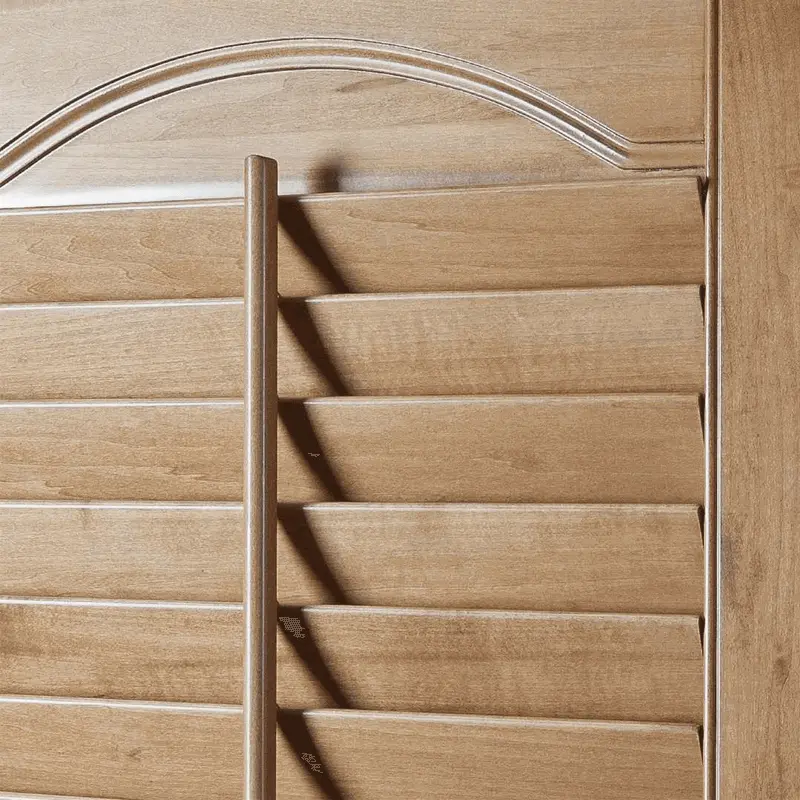

Best Uses
Pine shutters are versatile and can complement both traditional and contemporary homes. They bring warmth to modern spaces and enhance the coziness of classic designs.
- Traditional Homes: Pine shutters can be stained to highlight their natural wood grain, fitting perfectly with the classic aesthetic.
- Contemporary Homes: Pine shutters can make a sleek, modern statement when painted in bold or neutral colors.
By integrating pine into your interior design, you will benefit from its durability and aesthetic versatility and contribute to a welcoming atmosphere in your home. Pine’s adaptability suits various design preferences, ensuring that your shutters are practical and stylish.
Paulownia Shutters
Paulownia wood is increasingly becoming a favorite for interior shutters due to its unique combination of being lightweight yet strong and its status as a sustainable wood source. Often referred to as the “aluminum of timbers,” Paulownia offers an impressive strength-to-weight ratio.
Characteristics:
- Lightweight: This makes it easy to install and operate as shutters.
- Strong: Despite its lightness, Paulownia is robust, ensuring longevity.
- Sustainable Wood Source: As a fast-growing species, Paulownia is an eco-friendly option.
Environmental Impact
Choosing Paulownia wood for shutters is a responsible environmental decision. It’s a fast-growing, renewable wood that helps reduce carbon footprints.
- Fast-Growing: Paulownia trees mature quickly to be harvested sooner than many other hardwoods.
- Renewable: The ability to regenerate from the existing root system after harvesting makes Paulownia a sustainable choice.
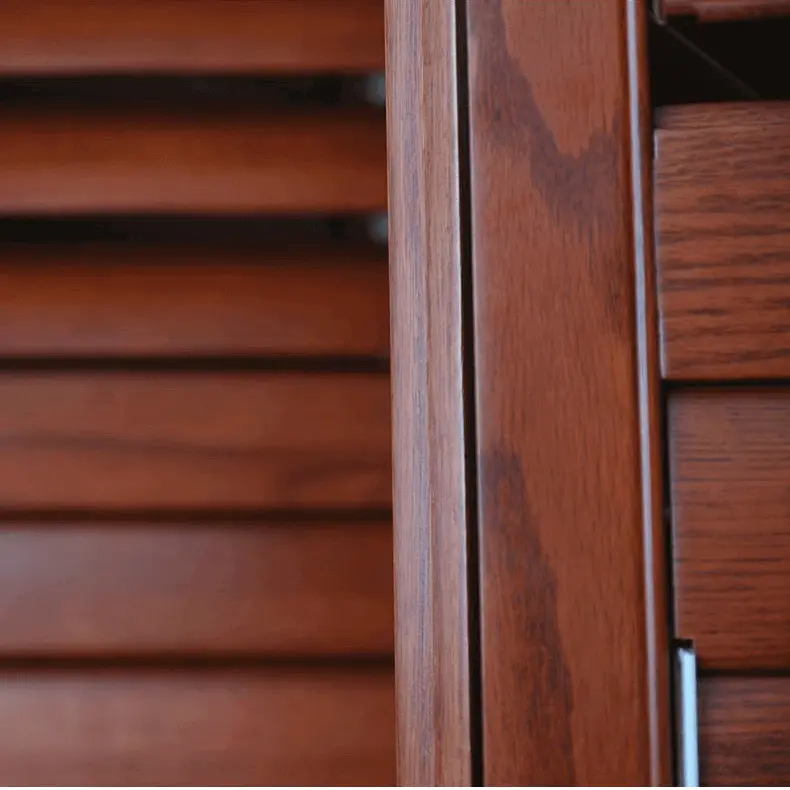
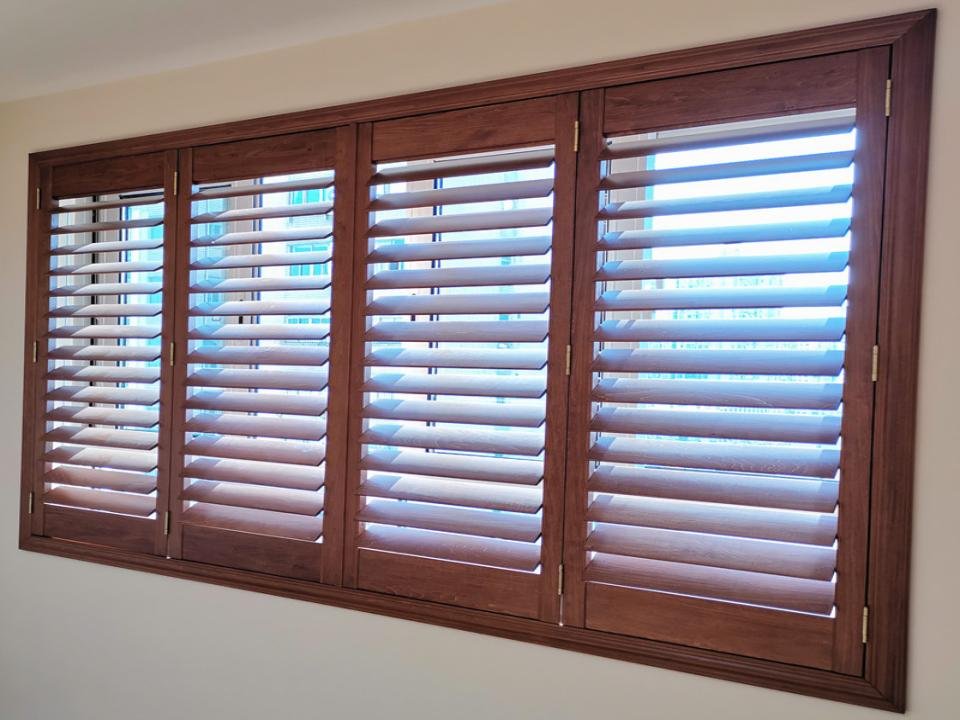
Best Uses
Paulownia’s characteristics make it ideal for various applications, particularly for more expansive windows and unique shutter shapes where weight can be a concern.
- More expansive Windows: Its lightweight nature means it won’t put undue stress on mounting hardware.
- Unique Shutter Shapes: The wood’s strength allows for creative and unconventional shutter designs without compromising durability.
With the conclusion of the section on Paulownia, your readers should have a comprehensive understanding of the top wood species for interior shutters. Each wood type offers unique benefits, and Paulownia stands out for its environmental friendliness and versatility. Encourage your readers to consider these sustainable options for their interior design needs.
This article explores five popular wood species excellent for interior wood shutters: White Ash, Basswood, Poplar, Pine, and Paulownia. Each species offers unique characteristics that cater to different aesthetic preferences and functional requirements.
White Ash stands out for its deep grain and durability, perfect for a charismatic appearance. Basswood is celebrated for its resistance to warping and ease of staining or painting. Poplar offers a cost-effective solution with a smooth surface that is ideal for various finishes. Pine brings a natural resistance to rot and a rustic appeal to any setting. Lastly, Paulownia is notable for its lightweight strength and sustainability, making it an eco-friendly option for more expansive windows and unique shutter shapes.
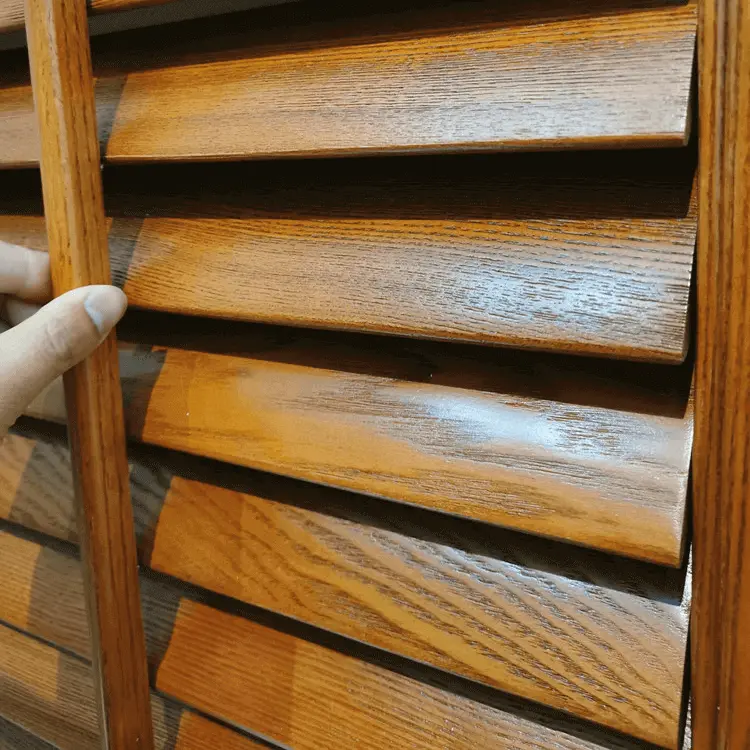

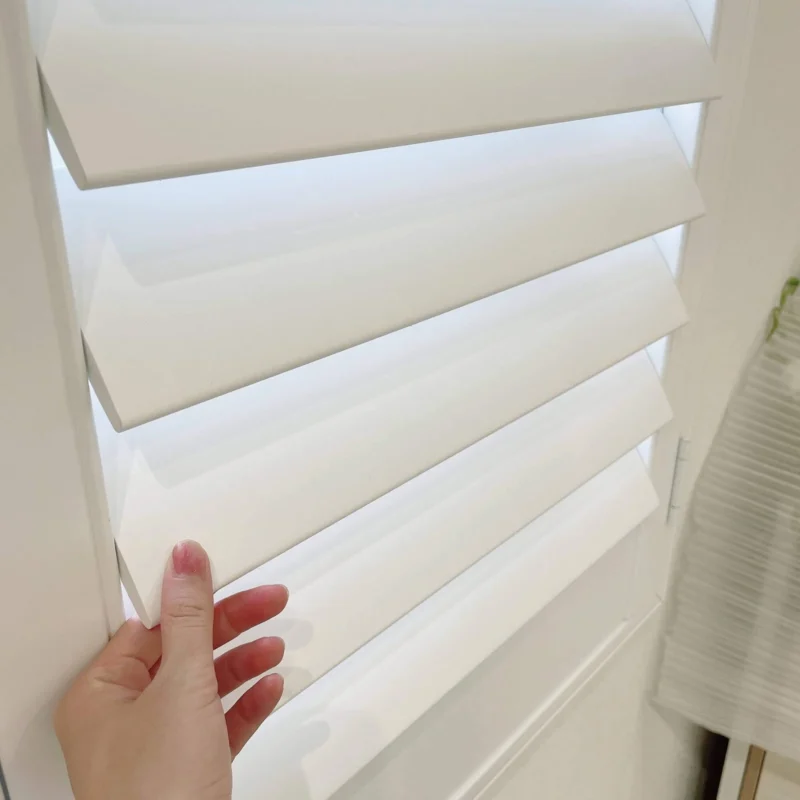


When selecting the suitable wood for your interior shutters, consider the look and feel you desire and the practical aspects such as durability, maintenance, and environmental impact. The choice of wood can significantly influence the ambiance of a room. With the options discussed, you can select a wood species that aligns with your needs and contributes positively to the environment.
Remember the importance of choosing a suitable material as you design your next interior project. We invite you to consider the wood species outlined in this article for their beauty, functionality, and environmental benefits. Share your thoughts, experiences, or questions in the comments below. Let’s discuss the best wood shutter solutions for creating beautiful, sustainable interiors.


